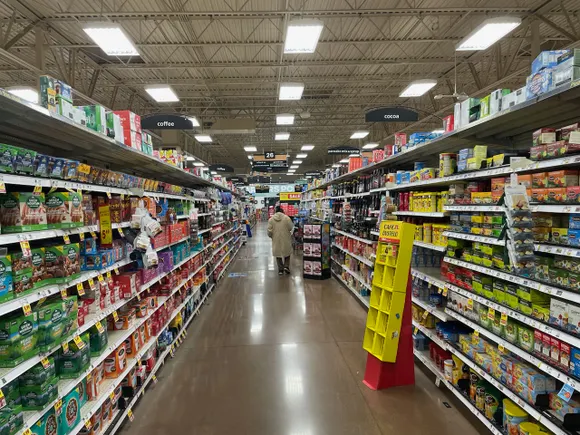Concerns are growing among grocery shoppers that the tariffs imposed by the Trump administration on imported goods could lead to higher prices at the supermarket, according to survey data from FMI – The Food Industry Association.
Despite these worries, most consumers believe they can still manage their food spending effectively, as revealed by FMI’s research. Andy Harig, FMI’s vice president for tax, trade, sustainability, and policy development, emphasized that shoppers are adapting to the current economic environment with flexibility.
Although grocery prices have not seen a significant increase due to tariffs according to the latest inflation data, retailers and suppliers are apprehensive about the potential impact on consumer spending in the future, Harig noted.
In July, grocery prices rose at a rate of 2.2%, slightly lower than the previous month, as reported by the U.S. Bureau of Labor Statistics. While overall inflation experienced a slight uptick on a monthly basis, it remained at a yearly pace of 2.7%.
FMI is advocating for an exemption process for certain imported foods, such as cocoa, cinnamon, and bananas, that would not benefit U.S. industry if subjected to tariffs. The organization aims to work with federal officials to address these concerns and mitigate the effects of tariffs on grocery prices.
Ricky Volpe, an associate professor of agribusiness, highlighted the potential impact of factors like disease outbreaks and adverse weather conditions on food prices. He mentioned the rise in lettuce prices due to bacterial outbreaks affecting yields.
Volpe and Harig emphasized the interconnected nature of various factors, including tariffs on commodities like aluminum and steel, which could contribute to rising food prices in the coming months. They pointed out that these tariffs have implications throughout the supply chain, affecting packaging and processing costs for food manufacturers.
As food companies navigate challenges like labor shortages and volatile energy prices, the stage is set for potential food price inflation. The increasing costs of doing business, including the need to update equipment and machinery, are expected to impact food prices across the board in the near future.

